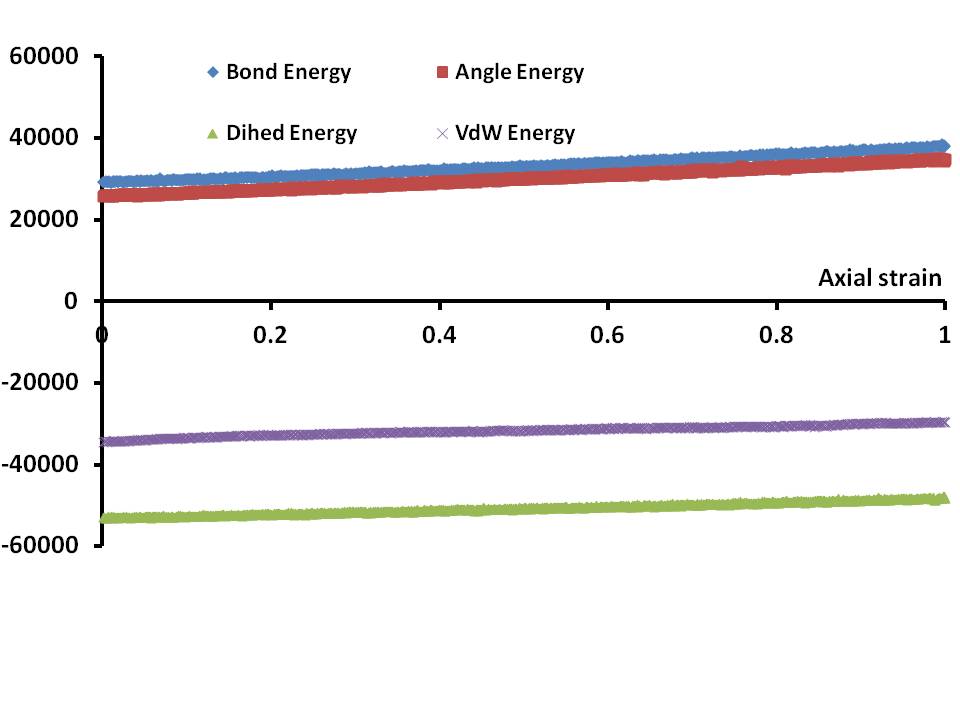Dear All,
I am doing uni-axial tension on glassy polymers with period boundary conditions along 3 dimensions.
But the Bond/Angle/Torsion/VdW energies DO NOT change as the strain increases, they are just constant during deformations. We use PCFF potential.
As a reference, in “A general inelastic internal state variable model for amorphous glassy polymers” by Bouvard et al, they have the Bond/Angle/Torsion/VdW energies changing as the strain increases. They use DREIDING potential.
Can anyone please help me figure out where this problem from? My input file is below.
Thanks a lot.
Lili Zhang
units real
boundary p p p
atom_style full
pair_style lj/class2 10.0
bond_style class2
angle_style class2
dihedral_style class2
improper_style class2
read_restart restart.ACBPA6030
variable strain equal “ln(1 + (lx - v_L0)/v_L0)”
variable p1 equal “v_strain”
variable p2 equal “-pxx*.101325”
variable p3 equal “-pyy*.101325”
variable p4 equal “-pzz*.101325”
variable p5 equal “pe”
variable p6 equal “7.603e5/vol”
variable p7 equal “(press-pxx-pyy)*.101325”
variable e1 equal “ebond”
variable e2 equal “eangle”
variable e3 equal “edihed”
variable e4 equal “evdwl”
variable tmp equal “lx”
variable L0 equal ${tmp}
print “Initial Length, L0: ${L0}”
timestep 1
fix 1 all nph y 1 1 1000 z 1 1 1000
fix 2 all deform 1 x trate 1e-6 units box remap x
Output strain and stress info to file
for units real, pressure is in [atmospheres]
fix def1 all print 1000 “{p1} {p2} {p3} {p4} {p5} {p6} {e1} {e2} {e3} {e4}” file ACBPA6030.txt screen no
Use cfg for AtomEye
dump 1 all cfg 10000 ACBPA6030_*.cfg id type xs ys zs fx fy fz mol
Display thermo
thermo 100
thermo_style custom step v_strain temp v_p2 v_p3 v_p4 ke pe press v_p6 v_e1 v_e2 v_e3 v_e4 v_p7
run 1000000
